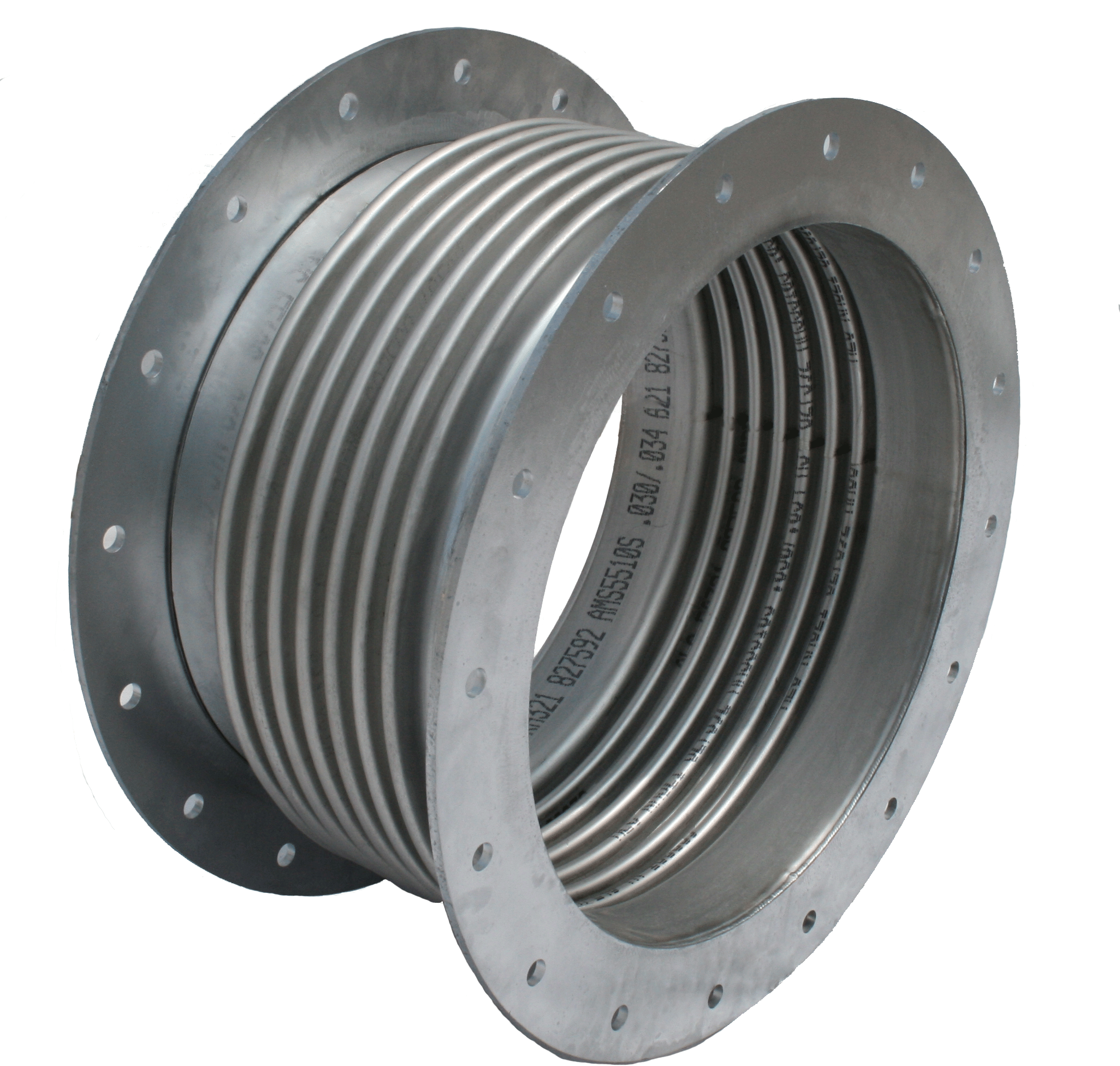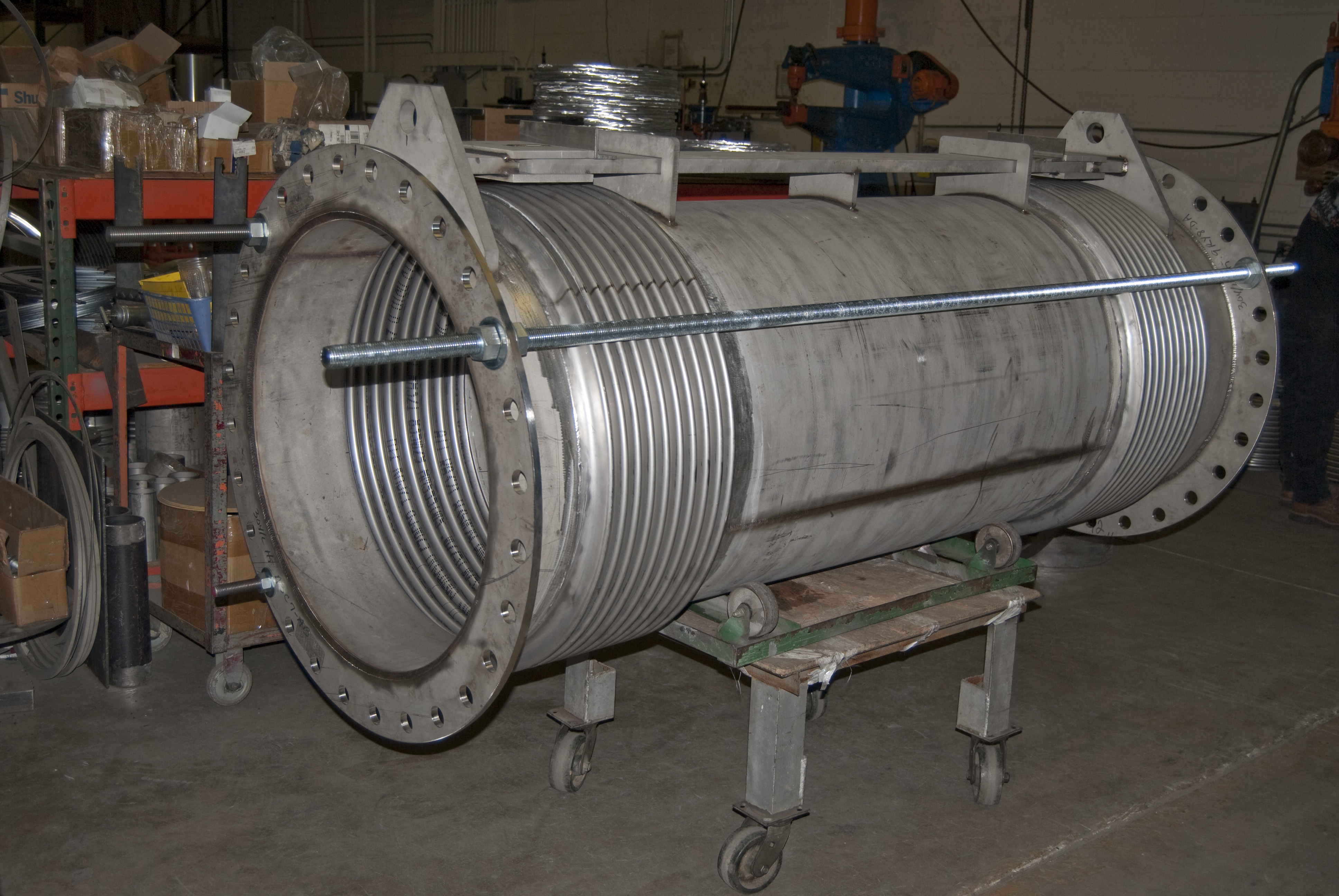Advantages of Metal Bellows Expansion Joints
 Metal bellows are designed to compensate for thermal movement of piping systems and take up far less space than piping bends and expansion loops require.
Metal bellows are designed to compensate for thermal movement of piping systems and take up far less space than piping bends and expansion loops require.
The design of metal bellows elements is governed and codified by the Expansion Joint Manufacturers Association (EJMA). EJMA provides the nomenclature, calculations, etc. These calculations have been verified by extensive testing by EJMA members and are recognized and/or enhanced by codes and standards such as ASME B31.3, ASME B31.1, and the Boiler and Pressure Vessel Code (BPVC). .
Metal expansion joint materials have defined allowable stress versus temperature identified by the various codes. This allows the bellows elements to have calculated spring rates, movements, and cycle life. Due to the defined materials allowable stress, depending on the material specified, the metal bellows elements can be designed for temperatures as low as -328°F (-200°C) and up to 1,800°F (982°C), without additional code testing. Also, metal bellows can be designed for a wide range of pressures from full vacuum to higher internal pressures depending on type of bellows, method of manufacture, and a host of other variables.
Additional hardware used with metal expansion joints (tie rods, gimbals, hinges, lugs, etc.) is required by EJMA to be designed to retain the full pressure thrust of the bellows element. This allows the expansion joint to be designed into an overall piping system including anchors, guides, and hangers.
Metal bellows elements can be lined with other materials such as PTFE which increases the metal bellows corrosion resistance while utilizing the pressure retaining capability of the metal bellows.
